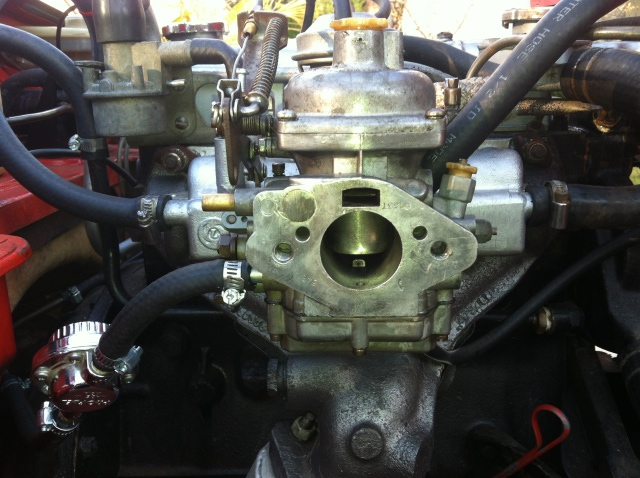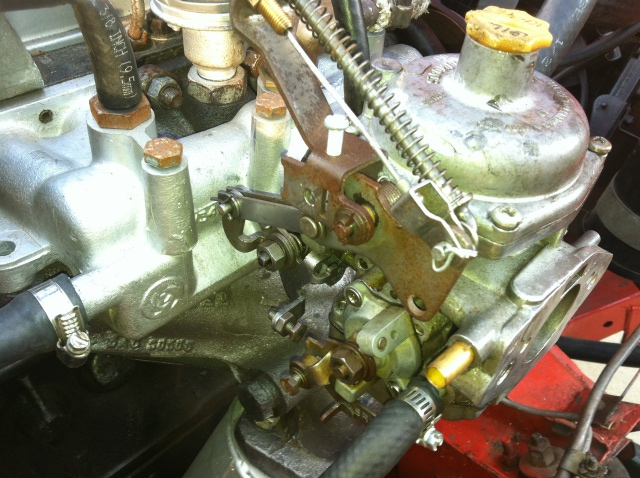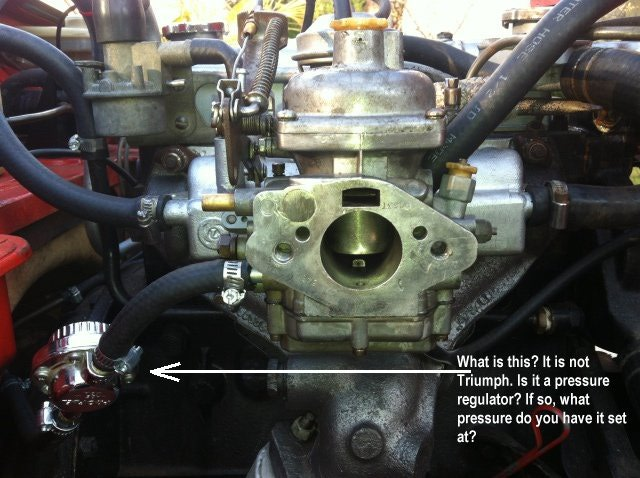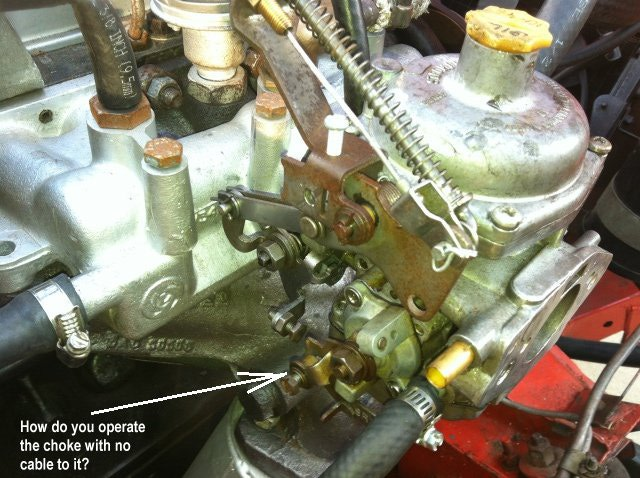Triumph Repair: Hard start 2, electric fuel pump, port holes
Question Carb1
Carb1
 Carb2
Carb2
QUESTION: For some reason it didnt let me reply on the last thread I started but I tried the hand over the intake and the car turned right on after 2 cranks!
 carb1.jpg
carb1.jpg
 carb2.jpg
carb2.jpg
ANSWER: That proves that the choke is not working but your picture "Carb 2" indicates it is not connected to any operating cable. Have you been working the choke by hand? What is that in picture "Carb 1"? A pressure regulator? If so what is the pressure set at and why is it there? Do you have an electric fuel pump? The pressure at the carburetor should be from 1.5 PSI to 3 PSI but not higher. Look at the two photos
Howard
---------- FOLLOW-UP ----------
QUESTION: Yes I've been operating by hand haven't had time to install a cable and it is a fuel regulator it was already on the car so I never took it off should I? So I need to buy a new choke?
AnswerThere is not much to the choke. It is just a flat plate with some holes in it that open small ports to extra fuel, so the first thing to do is to rmove it from the side of the carburetor and confirm that the holes line up with the port holes in the carburetor. The best way to do this is to remove the carburetor and choke assembly. Remove the float chamber and with a thin wire confirm where each hole goes. One hole in the carburetor goes directly into a fuel supply and the another goes into the air stream. A good method is to use compressed air to tell where each hole goes. Some choke plates had a series of very small holes to meter the amount of fuel as the choke was opened. They can get stopped up with fuel varnish.
If you notice the choke assembly has a disk that is spring loaded so as to press against the side of the carb. If this spring does not press the disk against the carb, it may be stuck on ist's shaft or the spring is broken. Either one will cause it not to operate. One other thing I once found was that there were no holes in the carburetor to match up with the flat disk. In this case it was a matter of this carburetor could not accept a manual choke or if the holes didn't line up right it was the wrong choke assembly for that carbureotr. Some times the holes get stopped up with dried varnish from old gas.
Keep in mind that this carburetor was not meant to have a manual choke and it was added. Over the years I have converted many of them but found some that could not be converted because the factory didn't drill the holes in the carburetor for a flat plate choke.
A fuel pressure regulator were sometimes added because some one installed an electric fuel pump that produced 5 to 7 PSI and that would flood the carburetor so they needed to add a pressure regulator to get the pressure down below 3 PSI.
Howard



